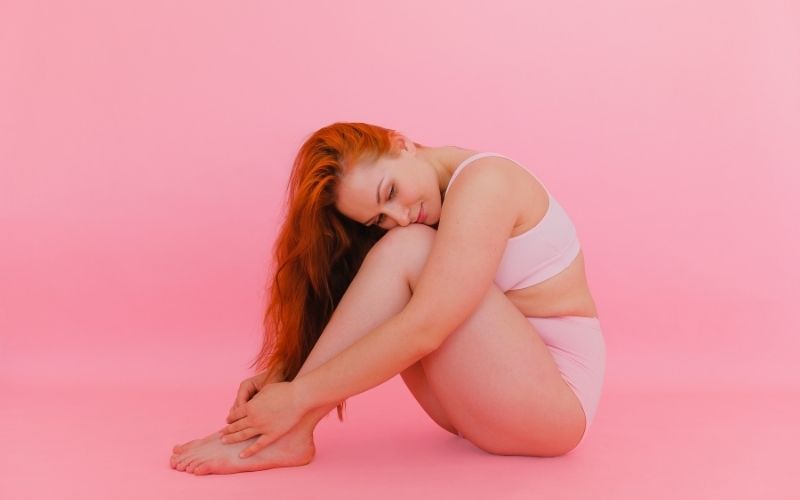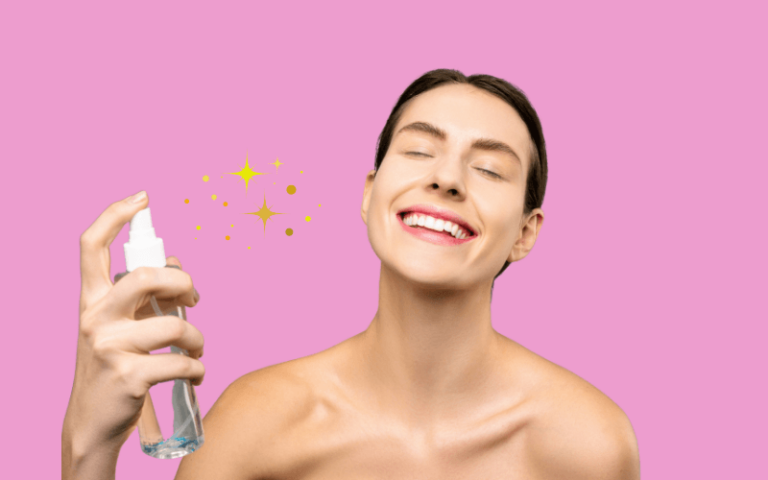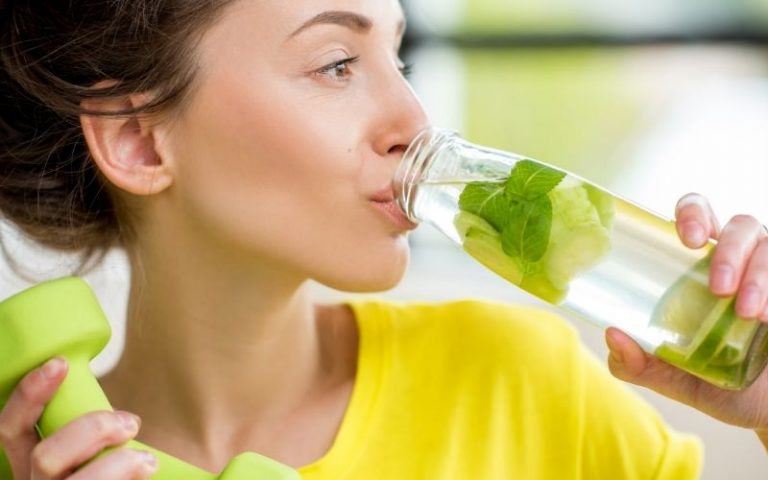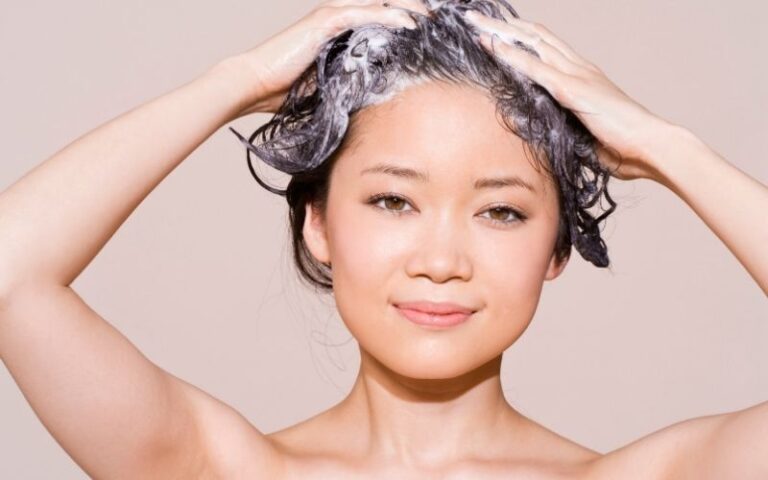Chest Acne: Top 7 Remedies To Get Rid Of It, According To Science

Hormonal zits on the jaw? Check. Acne around the mouth? Check. There are even articles out there about bacne! But one thing we don’t expect is to get chest acne.
Whether you’re an adult facing hormonal changes, a teen going through puberty, or the parent of a newborn with baby acne, everyone is susceptible to chest acne.
Luckily you can fight chest breakouts by trying out some of the tips listed below.
Whether you make lifestyle changes, try a prescription topical product, or simply incorporate an active ingredient from a skincare product like your cleanser, the zits on your chest don’t have to last forever!
What’s causing chest acne breakouts?
Most of us know how pimples form, or at least we have some idea where they come from in the first place.
But what’s causing them on our chest? Acne vulgaris (the fancy term for pimples) occurs for many reasons.
Chest acne typically stems from wearing sweaty clothes trapped in humidity, hormonal fluctuations such as puberty, and simply having acne-prone skin (thanks a lot, genetics).
Even newborns can suffer from little bumps. From infancy to adulthood, acne is a burden that we can all learn to learn to combat.
Hygiene and clothing
A simple first step in ridding your chest acne is having proper hygiene.
Proper hygiene to remove excess oil is important when dealing with adult acne anywhere on the body. Oil glands, or pores, become clogged with excess sebum.
This happens naturally throughout the day especially if you have oily prone skin .
Your hair can also contribute to body acne if it comes into contact with your chest.
Washing your clothes will help to eliminate bacteria that may linger in your clothing from sweat. Pay particular attention to clothing worn during workouts or even normal activity on hot and humid days.
You should be sure to check your laundry detergent for any irritants to your skin and potential allergens that cause rashes which can worsen acne and cause further inflammation.
Diet
Our skin is only as good as the foods we feed ourselves! A poor diet can result in severe acne.
In most cases, eating more vitamin-rich foods full of nutrients and antioxidants or taking supplements is important to keep your vitamin levels at the right level.
Choose vegetables and fruits of different colors to ensure you’re getting a wide spectrum of vitamins and minerals.
Newborn acne
Also known as neonatal acne, baby acne is quite common in newborns.
Maternal hormones can still circulate in newborns after being in the womb and throughout infancy from breast milk.
Formula can also be an irritant and cause baby acne. Hormones and baby formulas can cause other issues such as cradle cap, rashes on the surface of the baby’s skin, and even diaper rashes.
These hormonal fluctuations may all contribute to tiny bumps on the delicate skin of infants. Another type of infantile acne is erythema toxicum which is a common skin condition that shows up as a rash in newborns.
If you’re concerned about infantile acne on your newborn, you should see an M.D. or a pediatric dermatologist.
Guidance for newborns changes frequently, and it’s not worth taking any chances with those little bundles so new to this world.
Hormones
The hormone responsible for sebum production is called Androgen. Hormonal fluctuations of androgen levels can lead to clogged pores therefore causing acne.
Hormonal acne lesions typically appear on the jawline and chin and can lead to whiteheads; or, in severe cases, cystic acne – large and painful pustules or cysts.
Common hormonal imbalances happen during puberty, menstrual cycles, pregnancy and menopause.
They can also be caused by side effects from birth control pills and hormonal disorders such as PCOS and endometriosis. Unfortunately, these hormone changes show up on the surface of the skin and cause adult acne!
Getting rid of chest acne for good
If you want to kiss those bumps on your chest bye bye for good, then it’s important to find an acne treatment to stay on top of chest acne and pimples.
1. Get an acne body wash
You can start by washing the skin pores of excess oil after getting sweaty with a body wash or scrub that has an acne treatment.
Oily skin is more prone to breakouts as the sebaceous glands produce more sebum which can clog pores.
Wash the chest area twice a day to remove moisture from sweaty clothes and incorporate an active ingredient in a body cleanser that controls oil production.
Common washes with acne-fighting ingredients are salicylic acid body washes, cleansers with benzoyl peroxide, and washes with alpha hydroxy acids such as glycolic and lactic acid.
The skin on the chest area is tougher than other parts of your body, so don’t be afraid to opt for a cleanser or topical treatment with a stronger percentage of an active ingredient.
Scrub that area clean!
2. Wear looser clothing
That cute top you like to wear may just be the cause of your chest pimples.
Wearing fitted clothes with a fabric that creates friction can cause discomfort and irritation on the surface of the skin, leading to breakouts.
Sometimes this only causes mild acne, redness, or dryness. In more severe cases from wearing fitted clothes, severe acne can also form heat rashes and inflammation.
Be sure to wear loose-fitting clothing with breathable fabrics and keep your chest dry of humidity to avoid pimples.
If you work out, wear a lot of sports equipment, or live in a humid environment where you sweat a lot, then you’ll be at a higher risk of developing chest acne.
It’s a good idea to try to wipe any excess sweat off with clean wipes throughout the day if you can.
Also, experimenting with a more natural laundry detergent may ensure that your current detergent isn’t what’s causing these zits to erupt.
It’s worth noting as well that if you aren’t wearing fabric on your chest, be sure to wear sunscreen.
Sun exposure can cause pigmentation of the chest area as well as sunburn!
3. Shower after getting sweaty
Get rid of that sweat!
Sweat glands and humidity are often the culprit of an acne disaster waiting to happen if you don’t cleanse the area shortly after activity.
After any activity outside activities that cause friction, and working out, it’s important to wash the surface of the skin to remove excess oil and dead skin.
Opt for lukewarm water especially if you’ve been outside in the heat.
The American Academy of Dermatology recommends cleaning your body and showering as soon as possible after sweaty activities.
It’s also worth a shot to make sure any hair products/shampoo that get washed out in the shower are also washed off your neck and chest area to avoid any lingering product or irritation.
4. Topicals and creams
Topical therapy, or using topical creams, are likely to do a lot of the heavy lifting when it comes to treating acne lesions.
Salicylic acid is one of the most common active ingredients found in over-the-counter acne medications.
As mentioned above, salicylic acid is a BHA, or beta hydroxy acid, that has been the go-to acne treatment for decades.
BHA’s chemically exfoliate the skin by targeting the excess sebum, or oil, in pores and shedding dead skin cells.
Oftentimes, these skin cells can clog pores and lead to further inflammation. Salicylic acid is found in gels, creams, body lotions, and chemical peels, just to name a few.
A salicylic acid wash is the most common way to fight chest pimples. It can be used daily and is usually safe for sensitive skin.
Benzoyl Peroxide is another strong over-the-counter active ingredient that’s antiseptic and fights the propionibacterium acne bacteria aka, the stuff that causes blemishes.
For acne lesions, nodules, and papules there are over-the-counter products with benzoyl peroxide that can be used.
Body washes containing benzoyl peroxide are another option, but note that they can cause a bleaching effect on washcloths and towels!
Also, the skin on our body is tougher than the skin on our faces.
Therefore, the products we use to combat our facial acne may not be strong enough to work for chest acne.
The same rule applies for back acne.
Retinoids are a strong topical treatment and one of the best ways to combat not only adult acne, but scars, skin discoloration, and texture — it basically does it all.
You can buy over-the-counter retinol serums or get a prescription from your doctor for adapalene, tretinoin, or oral isotretinoin.
Retinoids are strong and can aggravate the surface of the skin so it’s important to start off slowly.
5. Don’t pop chest acne!
Resist the urge!
It’s essential you don’t pop any zits and chest pimples as it will only make them worse.
Popping and squeezing pimples causes inflammation around the pores which can immediately cause scar tissue to form, and in worst case scenarios, leave a permanent scar.
The pus from a popped pimple can also spread bacteria to the surrounding pores which can lead to the formation of more pimples.
It’s hard to resist the urge to pop a zit, especially when they cause discomfort.
A topical treatment will serve you better in the long run.
In addition to acne-fighting topicals there are many lifestyle changes and natural approaches to take in the fight against chest breakouts.
In some cases a simple change to your diet or switching out things such as laundry detergent and skin care products to something non-comedogenic may be all that’s needed!
6. How to use diet to your advantage
Consuming enough nutrients and avoiding any foods you may be allergic to is key to preventing inflammation of the body leading to acne.
Zinc is an important mineral for the inside as well as outside your body, especially for acne! It can be taken orally or applied topically in the form of creams and ointments.
Commonly found in products with an SPF, zinc is available in many topical products to soothe irritated skin.
Look for diaper rash creams and wound-healing ointments for products that contain zinc.
As mentioned above, getting enough vegetables and fruits in your diet is important.
If you think you may be deficient in something or have an allergy, you can go to your doctor to have your vitamin levels tested for any potential allergens.
7. Chest acne natural methods
If you’re looking for natural ingredients to heal your chest acne, look no further.
Apple cider vinegar
Apple cider vinegar has many uses as a natural treatment for skin conditions when used topically.
The fermented acetic acid found in apple cider vinegar treats acne lesions through its antibacterial and antifungal properties.
You can make an apple cider vinegar rinse by combining 1 part vinegar to 2 parts water and spraying it on your chest or applying it with a cotton pad.
You can also use it as a stronger spot treatment by dabbing undiluted apple cider vinegar on any blemishes.
If you experience any inflammation or your skin worsens, stop use immediately- you may be using too much!
Tea tree oil
We’ve all seen the images on Pinterest talking about how amazing tea tree oil is.
When used as a topical, tea tree oil has antimicrobial and antibacterial benefits and is said to help soothe eczema and rosacea.
Apply tea tree oil topically as a spot treatment by diluting it with an oil such as jojoba or argan and dabbing it on the chest area where you have bumps.
Start off slow to make sure you don’t have an allergic reaction and are diluting your spot treatment properly.
If you notice any redness or rashes, stop use immediately.
Nervous about making your own? Tea tree oil face cleansers are also available to buy over-the-counter and are properly diluted and formulated to be used on skin.
Other natural remedies
- Green tea: Known for centuries to have antioxidant benefits that help your body from the inside out. It’s rich in epigallocatechin gallate (EGCG), a polyphenol which has been proven to improve acne and oily skin by lowering androgen levels to reduce excess sebum. Green tea is known to get rid of toxins in the body and promote healing properties.
- Witch hazel: An anti-inflammatory astringent sold over-the-counter that is a gentle way to fight against psoriasis, eczema, and acne. It can be used as a toner.
- Oat milk: Can be used as a face mask for acne prone skin by taking the pulp used to make the milk and applying it to the surface of the skin. Oat milk is also a great natural way to add hydration to the skin!
- Aloe vera: A humectant that when layered under a lotion retains moisture. Aloe vera soothes redness, dryness, inflammatory hyperpigmentation, and even rosacea.
Types of chest acne
With so many different types of zits, it can be confusing. Let’s break down the several types of acne vulgaris and skin conditions that can appear on the chest area:
- Blackheads: Tiny bumps that form from the overproduction of sebum in the hair follicle. The surface appears dark or black. They are considered mild acne.
- Whiteheads: Closed comedones that are tiny with a white bump, another mild form of acne.
- Seborrheic dermatitis: Flaky, dead cells and feels like dry skin. It’s more commonly known as dandruff. The American Academy of Dermatology based out of New York City explains what dandruff is and how to treat it with many of the same ingredients used to fight acne.
- Cystic acne: More severe type of acne. Sometimes referred to as nodules, lesions, papules, cysts, and acne lesions. These go deeper beneath the skin’s surface. Cystic acne can often lead to scars and is associated with menstrual cycles and hormonal changes.
- Fungal acne: A type of acne that is caused by an overproduction of yeast within the skin’s microbiome. This type of acne can cause inflammation of the hair follicle and these follicles can cause blemishes. Often found on areas such as scalp, forehead, and chest.
- Acne conglobata: often found on the chest, buttocks, face, shoulder, upper arms, and thigh. The severity can differ and in more rare cases acne conglobata shows up as painful nodules and lesions.
See a derm or M.D. for your chest acne
Sometimes you need to pull out the big guns.
If you feel you have exhausted all of your options or want a professional opinion, visit your dermatologist for a proper diagnosis. A doctor will also be able to prescribe you topicals at higher concentrations approved by the FDA drug administration.
There are several prescription acne treatments that your doctor may recommend.
A few types are oral antibiotics such as doxycycline, topical steroids, and topical antibiotics.
Isotretinoin, also known as Accutane, is an oral medication used as a strong treatment plan that can be prescribed in severe cases.
For hormonal imbalances, spironolactone is a common oral medication that can be prescribed.
Dermatologists can also offer topicals that help with acne scars.
All in all…
Breakouts anywhere can feel embarrassing— especially on the chest.
Luckily with a few changes to your lifestyle, you can get ahead of chest acne and get the clear skin you want.
Be sure you are getting enough vitamins in your diet. Avoid fitted clothes and keep your chest dry.
Don’t forget to leave those pimples alone since popping them will only make them worse!
If you already have small bumps on the chest area, try a medicated body wash, reevaluate your skin care products, and try out some natural alternatives.
Consider seeing a dermatologist or M.D. if your situation is more severe.
- “Acne.” National Institutes of Health, 2016,niams.nih.gov/health-topics/acne
- “Acne.” Women’s Health, 2018,womenshealth.gov/a-z-topics/acneBienenfeld A, et al.
- “Androgens in women: Androgen-mediated skin disease and patient evaluation,” Journal of the American Academy of Dermatology, 2019, 10.1016/j.jaad.2018.08.062Elsaie ML.
- “Hormonal treatment of acne vulgaris: An update,” 201610.2147/CCID.S114830Nasri H, et al.
- “Medicinal plants for the treatment of acne vulgaris: A review of recent evidences” 2015, 10.5812/jjm.25580
- “Acne breakouts: Controlling problem pimples,”2018newsinhealth.nih.gov/2018/07/acne-breakouts
- “Acetic acid,”pubchem.ncbi.nlm.nih.gov/compound/acetic_acidCanavan TN, et al.
- “Optimizing non-antibiotic treatments for patients with acne: A review,” 2016 doi.org/10.1007/s13555-016-0138-1Mayo Clinic Staff.
- “Acne,” 2017, mayoclinic.org/diseases-conditions/acne/basics/causes/con-20020580“How to prevent common skin infections at the gym.” American Academy of Dermatology, https://www.youtube.com/watch?v=u4ruysjfWEE&ab_channel=AmericanAcademyofDermatology





